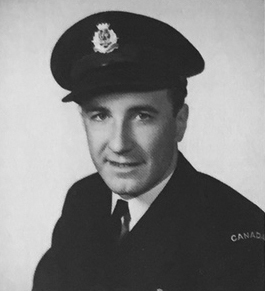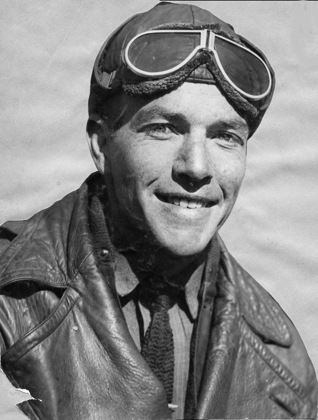 Lancaster
Lancaster  |
Media
|
Media
 Lancaster
Lancaster  |
Media
|
Media
Lancaster FM159 Chronicles
Lancaster FM159
My next Lancaster (FM159) was with none other than Clyde Pangborn, the pre-war US air hero and round-the-world flyer. I thought it would be great to fly with an old pro, but the trip turned out to be the scariest of my twenty crossings. There wasn't much said as we strode out to Lancaster FM159, 29 May 1945. But I did mention to Pang that I had done an exhausting session of blind-flying instruction the day before, including recovery from awkward positions. He came back with, "That's good, the trouble with the young fellows today, they don't know their instrument flying."
|
 Fred W. Hotson |
 |
We were somewhere between Seven Islands and Goose Bay, on solid instruments, when the artificial horizon toppled, useless. After caging the gyro, he remarked, "We'll have to go needle-and-ball," so I kept a close watch. A short time later the props were a little out of sync. I was about to do the small adjustment needed, but Pang leaned over to do the job himself running them through and smoothing them out. When he went back to the instruments he found we had built up considerable speed. Obeying his instincts, he began tugging on the controls -but the harder he pulled, the higher the speed. The G forces began to build excessively, indicating a classic example of a "death spiral." Without dual controls and with high G forces, all I could do was to shout, "take off bank -needle and ball!" I tried to point to the turn-and-bank instrument, which by now was at opposite extremes on the dial but I couldn't get out of the seat. Even raising my arms to point was a major effort. The craziest part of this incident occurred when we broke into a short period of ragged cloud and saw a Dakota go across our nose -in what looked like a vertical dive. While it was bad enough going through the Dakota's altitude, so close that we could read its numbers, Pang's next statement was a classic, "Look he's crashing!". It was our windshield that created the illusion. We were in a vertical bank and going down fast. We were the ones about to crash if he didn't do something soon! Fortunately, there was a ragged ceiling about a thousand feet over the dark St. Lawrence where my ex-hero was able to level the wings and recover from the considerable dive. |
His landing at Gander left much to be desired and, although the artificial horizon was replaced, it was with some misgivings that I took my seat for the flight over the Atlantic that night. The only word I spoke to Pang in Prestwick was "Goodbye." There was no need to review his failure to go to the needle-and-ball instrument as I had so recently been taught. Pangborn, unfortunately, was one of those captains who had to do everything himself -I might as well have stayed in Montreal.